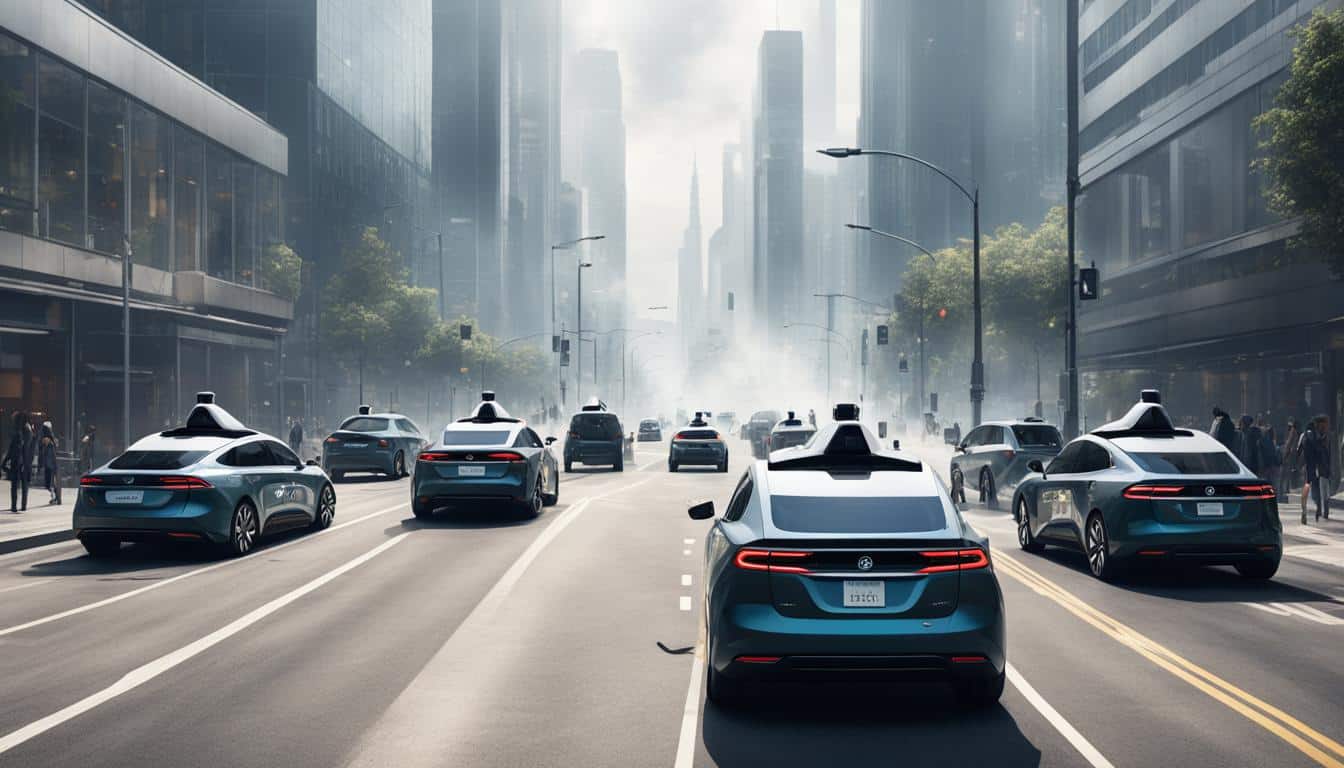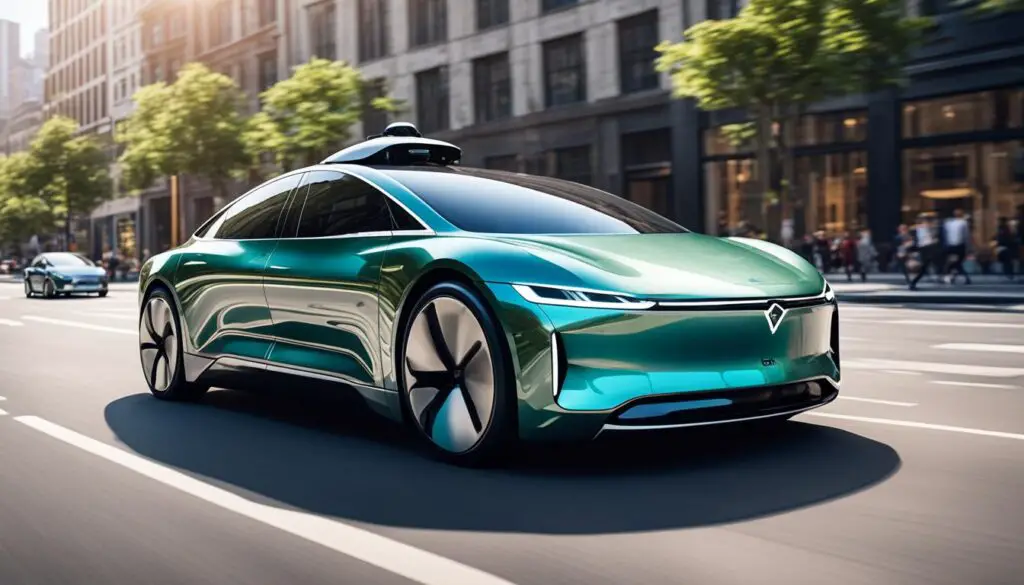
Assessing the Environmental Impact of Electric Self-Driving Cars
As we look to the future of transportation, the emergence of electric self-driving cars has sparked both excitement and concern. These innovative vehicles offer the potential to revolutionize the way we commute, providing improved energy efficiency and reduced emissions. However, it is crucial to assess their environmental impact to ensure that we are making sustainable choices for our planet.
Electric self-driving cars have the advantage of using highly efficient electric engines that produce minimal emissions compared to conventional vehicles. This is a significant step forward in the fight against climate change and air pollution. However, we must also consider the source of the electricity used to charge these vehicles. If powered by clean energy sources, such as renewables, the overall emissions can be significantly reduced, leading us closer to a carbon-neutral future.
Furthermore, the advanced computer systems and automation technology of self-driving cars allow for improved efficiency on the road. Their driving style, known as automated “eco-driving,” promotes smoother acceleration and deceleration, resulting in reduced fuel consumption. Studies have shown that this driving style can decrease fuel consumption by 15 to 20%. However, it is essential to acknowledge that the computational needs of self-driving cars require a significant amount of energy, which can increase their overall power consumption and greenhouse gas emissions. Therefore, the combination of electric engines and autonomous systems is crucial to minimizing the environmental impact of self-driving cars.
Beyond the direct impact on emissions, electric self-driving cars have the potential to address another critical environmental issue: traffic congestion. Through intelligent interactions with other vehicles and road infrastructure, these cars can optimize route calculations and improve road occupancy efficiency. Additionally, the concept of “platooning,” where cars form a close-knit formation on the road, can further reduce energy consumption and enhance traffic flow. This can lead to decreased fuel consumption, emissions, and a potential shift in population distribution, as people are encouraged to move to less congested areas.
Key Takeaways:
- Electric self-driving cars offer improved energy efficiency and reduced emissions.
- The source of electricity used to charge these vehicles plays a crucial role in determining their environmental impact.
- Automated “eco-driving” in self-driving cars can lead to significant fuel consumption reductions.
- The computational needs of self-driving cars require careful attention to minimize their overall environmental impact.
- Electric self-driving cars have the potential to reduce traffic congestion and improve overall traffic flow.
How Electric Self-Driving Cars Impact Emissions
Electric self-driving cars are revolutionizing the transportation industry with their highly efficient electric engines. Compared to conventional vehicles, these cars produce minimal emissions, offering a significant advantage in reducing environmental impact.
However, it is important to consider that the overall emissions of electric self-driving cars are influenced by the source of electricity used to charge their batteries. The use of clean energy sources, such as renewables, can significantly decrease emissions and enhance the environmental benefits of these vehicles.
The global shift towards renewable energy sources is a crucial factor in reducing transport-related emissions. As more countries prioritize clean energy, the convergence of electric and autonomous vehicles is expected to contribute to the overall decrease in emissions. With the growing adoption of electric self-driving cars, experts predict that by 2025, 20% of all new cars sold globally will be electric, further accelerating the reduction of emissions.
Benefits of Clean Energy Sources for Electric Self-Driving Cars
When electric self-driving cars are powered by clean energy sources, such as solar or wind power, the entire life cycle emissions of these vehicles are significantly reduced. The emission reduction potential of electric vehicles (EVs) depends on the carbon intensity of the electricity grid.
The table below provides a comparison of emissions between electric self-driving cars powered by different energy sources:
| Energy Source | Emissions (g CO2/km) |
|---|---|
| Coal | 115 |
| Natural Gas | 56 |
| Solar | 0 |
| Wind | 0 |
As seen in the table, powering electric self-driving cars with solar or wind energy eliminates carbon emissions, making them truly zero-emission vehicles. However, even when charged with less clean energy sources like coal or natural gas, their emissions are still considerably lower compared to conventional gasoline-powered cars.
By leveraging clean energy sources, electric self-driving cars have the potential to make a significant positive impact on reducing emissions and protecting the environment. The transition to renewable energy is a vital step in maximizing the environmental benefits of these innovative vehicles.
The Efficiency of Electric Self-Driving Cars
Electric self-driving cars offer a higher level of efficiency compared to conventional vehicles, thanks to their advanced computer systems and automated “eco-driving” capabilities. This driving style focuses on smoother acceleration and deceleration, resulting in reduced fuel consumption and lower environmental impact. In fact, estimates from the US Department of Energy suggest that eco-driving techniques can decrease fuel consumption by 15 to 20%. This efficiency is a key advantage of electric self-driving cars, offering both economic and environmental benefits.
However, it’s important to consider the computational needs of self-driving cars, which require a significant amount of energy. This increased energy consumption can potentially lead to higher greenhouse gas emissions. To address this concern and minimize the environmental impact, it becomes crucial to ensure that self-driving cars are electric, utilizing clean energy sources for their operations.
The Benefits of Automated “Eco-Driving”
Automated eco-driving plays a crucial role in enhancing the efficiency of electric self-driving cars. By adopting a smoother driving style with optimized acceleration and deceleration, these vehicles maximize energy efficiency and reduce fuel consumption. Smoother driving patterns also translate into improved passenger comfort and reduced wear and tear on the vehicle’s components. The overall result is a more sustainable and cost-effective transportation solution.
“Automated eco-driving significantly reduces fuel consumption by encouraging smoother and more efficient driving patterns. By adopting this approach, electric self-driving cars contribute to a greener and more sustainable future.” – John Davis, Automotive Expert
The Importance of Electric Self-Driving Cars
Electric self-driving cars are an essential aspect of the transition towards a more sustainable transport system. By combining electric propulsion and autonomous capabilities, these vehicles reduce reliance on fossil fuels and minimize harmful emissions, thereby combating climate change and air pollution. The improved efficiency of these cars contributes to the broader goal of achieving carbon neutrality in the transportation sector.
Image: Electric Self-Driving Car

Reducing Traffic Congestion with Electric Self-Driving Cars
Electric self-driving cars hold great potential in alleviating traffic congestion, a pressing issue that plagues cities worldwide. By leveraging advanced technologies, these vehicles can intelligently interact with each other and optimize route calculations, resulting in more efficient road occupancy and reduced commute times. This not only benefits individuals by saving time but also has significant environmental implications by lowering fuel consumption and emissions.
One notable advantage of electric self-driving cars is their ability to form a train-like formation on the road, known as “platooning.” When cars are closely interconnected, they can synchronize their movements, maintaining short distances and operating in unison. This coordinated behavior enhances safety, mobility, and energy savings. In fact, studies suggest that platooning can lower energy consumption by up to 25% compared to conventional driving methods.
Smoother traffic flow, facilitated by the intelligent coordination of electric self-driving cars, can have additional benefits beyond reducing congestion. It can incentivize people to relocate to the outskirts or rural areas, where property prices are often lower, leading to a natural redistribution of the population. This decentralization can further alleviate traffic congestion in urban centers, decrease the need for extensive commuting, and mitigate the associated environmental impact.
By embracing electric self-driving cars and their potential to minimize traffic congestion, society can make significant strides towards creating a more sustainable transportation system. The combination of intelligent route optimization, platooning, and population redistribution can go a long way in reducing fuel consumption, emissions, and overall environmental impact.

| Benefits of Electric Self-Driving Cars in Reducing Traffic Congestion |
|---|
| Optimized route calculations |
| Efficient road occupancy |
| Enhanced safety and mobility through platooning |
| Reduction in fuel consumption and emissions |
| Potential for population redistribution |
Conclusion
Electric self-driving cars have immense potential in revolutionizing the transportation sector. They not only offer a solution to reduce emissions but also contribute to the overall sustainability of our planet. By integrating electric vehicles with autonomous driving technology, we can pave the way for a greener and more efficient future of transportation.
Although there are challenges to overcome, such as ensuring the electricity used to charge these vehicles comes from renewable sources, continuous advancements in research and development will lead to more energy-efficient and environmentally friendly electric self-driving cars. With the increasing shift towards renewable energy generation, the environmental impact of electric self-driving cars will continue to diminish, promising a cleaner and greener future.
The adoption of electric self-driving cars is a crucial step towards achieving carbon neutrality. Through reduced emissions and improved efficiency, these vehicles can help combat climate change and address the environmental concerns associated with traditional transportation. The future of transportation is evolving, and electric self-driving cars play a significant role in shaping a sustainable and eco-friendly society.
In conclusion, electric self-driving cars have the potential to create a more sustainable future. The combination of electric power and autonomous driving technology holds the key to reducing emissions and transforming the way we travel. As we continue to innovate and make advancements in this field, we move closer to a transportation system that is not only efficient but also environmentally responsible.
FAQ
Are electric self-driving cars more environmentally friendly than conventional vehicles?
Yes, electric self-driving cars are more environmentally friendly than conventional vehicles. They have highly efficient electric engines that produce minimal emissions compared to traditional vehicles. However, the environmental impact of these cars depends on the source of electricity used to charge their batteries.
How do electric self-driving cars reduce emissions?
Electric self-driving cars reduce emissions by utilizing highly efficient electric engines. The driving style of these vehicles, known as automated “eco-driving,” leads to smoother acceleration and deceleration, resulting in reduced fuel consumption and emissions. Additionally, when these vehicles are powered by clean energy sources, such as renewables, their overall emissions are significantly reduced.
Can electric self-driving cars help reduce traffic congestion?
Yes, electric self-driving cars have the potential to reduce traffic congestion. These vehicles can intelligently interact with each other and the road infrastructure, enabling optimized route calculation and efficient road occupancy. When cars are closely interconnected, they can form a train-like formation on the road, known as “platooning,” which enhances safety, mobility, and energy savings.
What are the challenges to the adoption of electric self-driving cars?
The challenges to the adoption of electric self-driving cars include the source of electricity used to charge their batteries and the energy requirements of their self-driving systems. It is crucial to ensure that these vehicles are powered by clean energy sources and to continue research and development to make them more energy-efficient and environmentally friendly.
How do electric self-driving cars contribute to a more sustainable future?
Electric self-driving cars have the potential to significantly reduce emissions and improve the overall sustainability of the transportation sector. Despite the challenges, continuous research and development will lead to more energy-efficient and environmentally friendly electric self-driving cars, contributing to the global transition to carbon neutrality and creating a more sustainable future.
